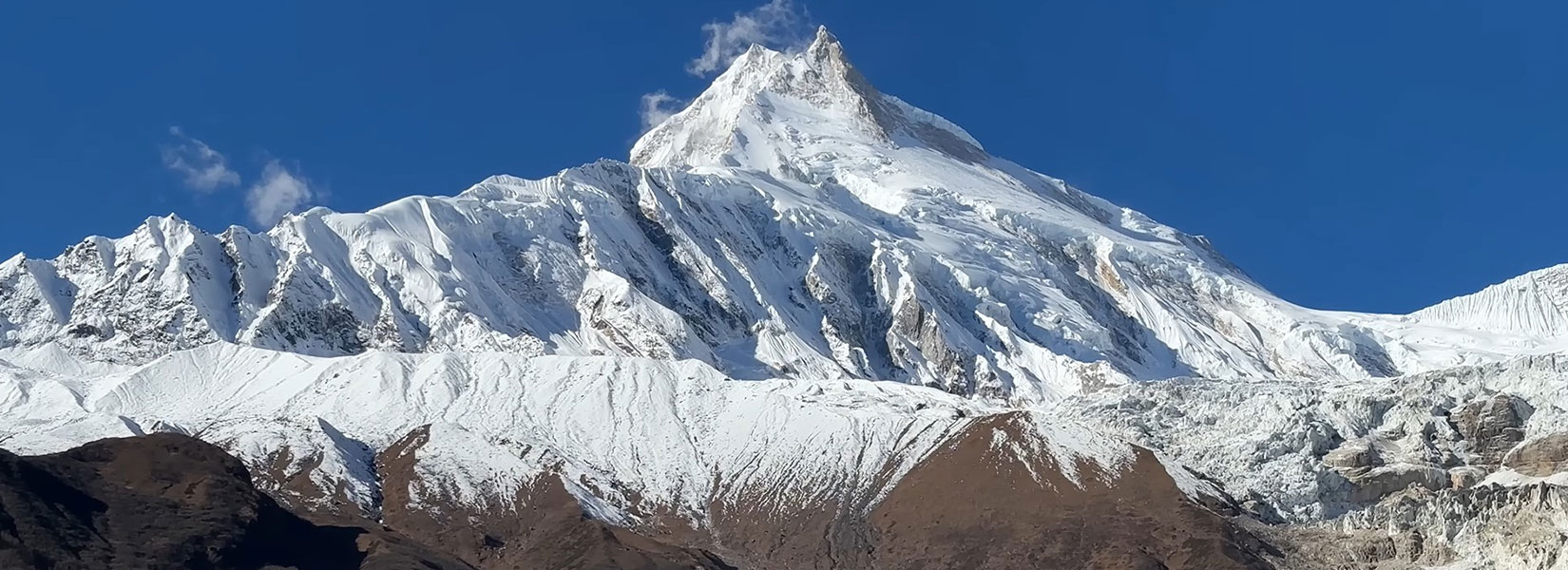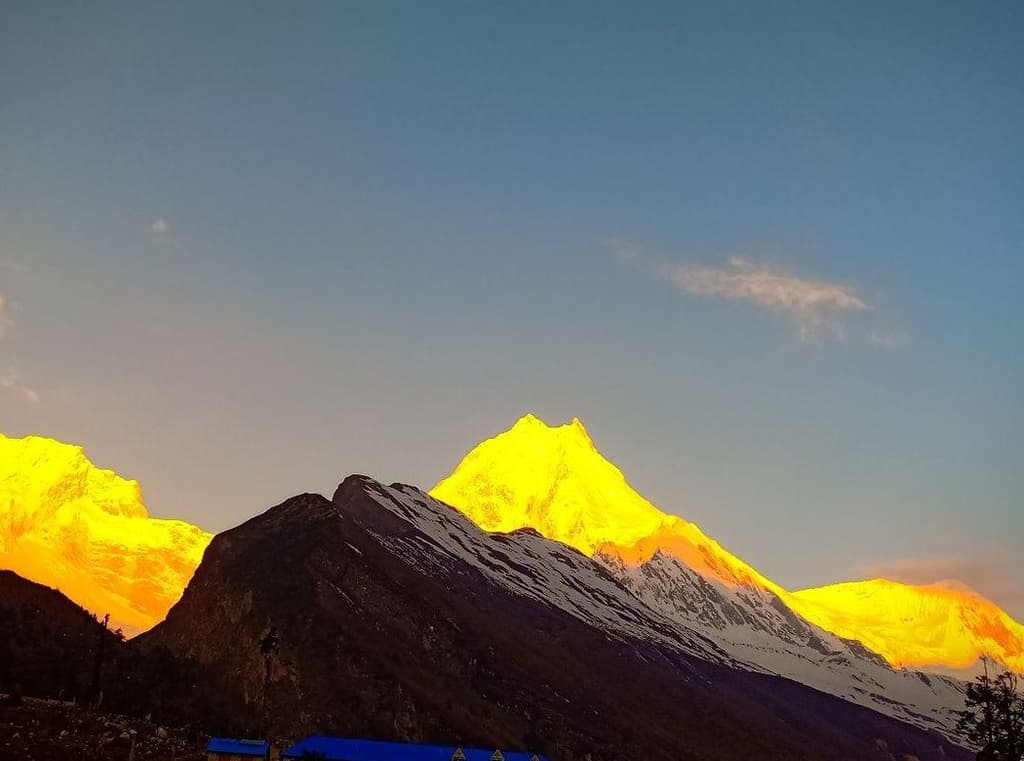 Manaslu Circuit Trek is considered moderately difficult. First things first, Manaslu Circuit Trek is a multi-day package that comes with around at least 14 days of itinerary. And just imagine what will it be like walking through the remote trails of the Manaslu region for hours and hours every day. First, the trek will be physically exhausting. Second, mental breakdowns occur as it becomes physically tough.
Manaslu Circuit Trek is considered moderately difficult. First things first, Manaslu Circuit Trek is a multi-day package that comes with around at least 14 days of itinerary. And just imagine what will it be like walking through the remote trails of the Manaslu region for hours and hours every day. First, the trek will be physically exhausting. Second, mental breakdowns occur as it becomes physically tough.
The next thing that comes as an obstacle is high altitude, where the air is thin, and trekkers have to go through acclimatization to adjust to high altitude. Going through these processes is good for the trekker’s health but also is challenging. Several facts make this trek challenging, such as weather conditions, uneven terrain, and more. Let’s discuss all of them in the blog below!
Physical Challenges
Manaslu Circuit comes with at least two weeks' itinerary. And each day comprises more than 6 hours of walking. Walking does not mean just hiking, but it also means traversing through several remote locations and rugged terrains. So hiking for long hours on uneven trails will be physically exhausting. Similarly, the trek consists of activities like crossing high-altitude passes, streams, and suspension bridges. Larke Pass, located 5213 meters above sea level, is one of the high-altitude passes where reaching is difficult. Since it lies at a high altitude, the wind is sharp, the temperature is cold, and the elevation is sloppy. So reaching there might be quite hectic for trekkers.
Trekkers need good physical fitness and muscle strength for long walks. Similarly, they should train their respiratory system to the optimum level as long walks can degrade breathing quality as the heartbeat increases. All in all, Manaslu Circuit Trek is physically challenging as trekkers require a high level of physical strength, stamina, endurance, and energy to complete it successfully.
Mental Challenges
The mental challenge is another problem during the Manaslu Circuit Trek. As you embark on the Manaslu Circuit Trek, you find that you must traverse through the rocky and rugged trails all around the route to the destination. Similarly, continuing the same pattern of an uphill hike through the treacherous pathways will be mentally exhausting too. Some trekkers even call their journey off and return. But we recommend that trekkers prepare well with these factors and proceed with their journey.
If you are trekking with professional guides and porters, it will not be much challenging. They will guide you through the easiest ways and lead you to your destination. The important thing to consider is to be motivated throughout the trek. Injuries, bad weather, and emergencies might give the space to have mental breakdowns during the journey. But it is recommended to take enough rest and acclimatize before commencing on high-altitude destinations like Manaslu Circuit.
High Altitude
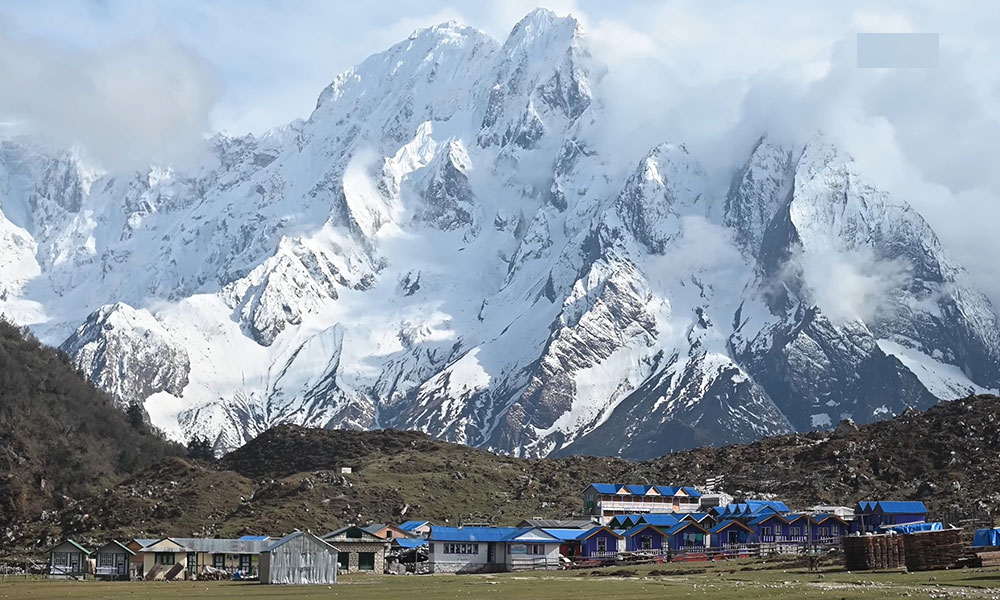
The highest point in Manaslu Circuit Trek is Larke Pass, 5213 meters above sea level. It is quite a high elevation for beginners. Before embarking on this trek, trekkers must be acknowledged with the facts of risks and potential dangers of high altitude.
While Manaslu Circuit takes trekkers to over 5000 meters, they will feel that the air is depleted. The oxygen level at such a height is very low, which might cause difficulty in breathing. Altitude sickness is another major concern during the Manaslu Circuit Trek. AMS (Acute Mountain Sickness), HACE (High Altitude Celebral Edema), and HAPE (High Altitude Pulmonary Edema) are some of the health hazards trekkers might encounter. Similarly, high-altitude location features strong winds, cold temperatures, and many other issues that might degrade the expectations of trekkers during the Manaslu Circuit Trek.
Extreme Weather and Climate
Extreme weather and climate conditions are the most common things trekkers encounter during the Manaslu Circuit Trek. The major reason for this is also the high altitude. Manaslu Circuit lies in the Himalayan region of Mid-Western Nepal, and the weather is unpredicted. And if you are traveling during the off-season, you might get in worse conditions. Weather hazards such as heavy snowfall and cold temperatures during the winter, rainfall, landslides, and floods during monsoon are common in this region.
Besides, the wind precipitation is high in the locations like Larke Pass and Bhimtang. It can cause problems while accommodating tents around the region.
Uneven Terrains
Manaslu Circuit Trek is a remote trek located in Mid-Western Nepal. The trek starts in Arughat, and the trail stretches to Machhakhola, Namrung, Lho, Samagaun, Larke, Bhimtang, and Tilche. The common thing trekkers find in all these locations is the remote trail, which is uneven, rugged, and rocky. Walking hours daily in such terrains is challenging.
Similarly, if you are traveling in monsoon season, the heavy rainfall makes the trail wet. It will not only makes your navigation hard but also can postpone the package. Landslides and soil erosion are most prone during the monsoon since all the landscapes are sloppy and uphill.
How to minimize Manaslu Circuit Trek Difficulty?
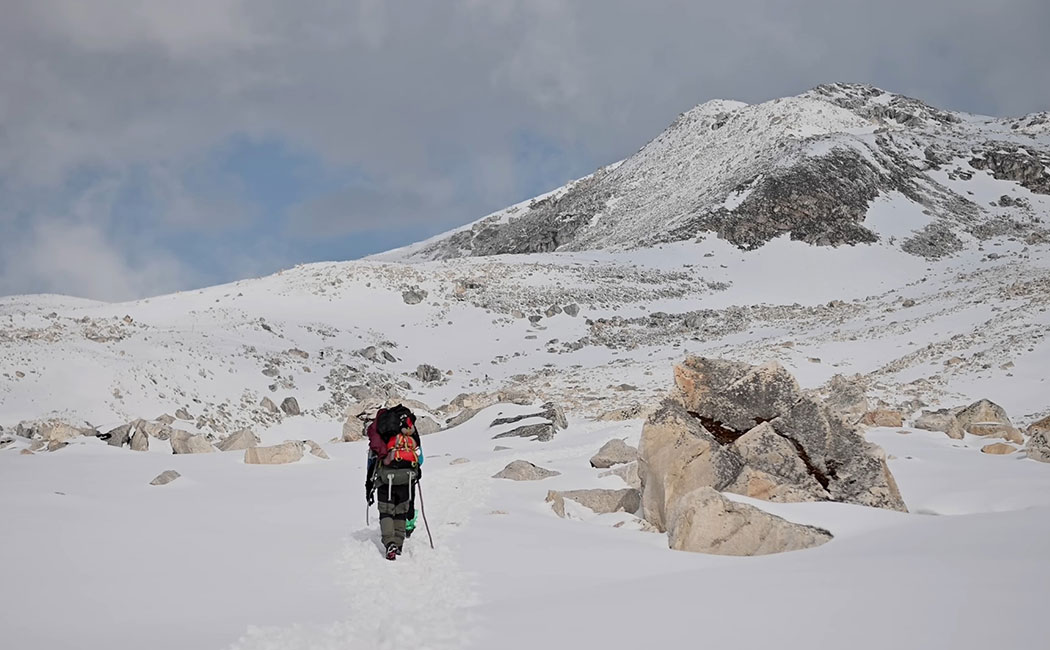
We already discussed how difficult is Manaslu Circuit Trek. Now let’s discuss how to minimize those difficulties. And the answer is simple; proper preparation. Proper preparation means preparing in all the aspects of trek, from physical fitness, mentality, gears, equipment, permits, guides, porters, accommodation, and logistic services. Here are some points on how you can prepare for the Manaslu Circuit Trek:
Physical and Mental Preparation
Trekkers must acquire a good physical shape before booking their Manaslu Circuit Trek. Preparing physically will cut off the obstacles by half during the trek. A strong physical shape will help you withstand the long walking hours through the rugged and steep trails, so why not prepare physically?
Trekkers should engage in increasing their muscle energy via cardiovascular exercises. Manaslu Circuit Trek includes a hike through the uphill and downhill sections, so your muscle should be strong enough to take on these challenges. Engaging in hiking, jogging, or cycling will increase your cardiovascular energy. Similarly, you can get into strength training by hitting gym workouts, such as squats, lunges, planks, and push-ups. To increase your endurance, you must go through longer hikes or walks and challenge your physical strength so that it will be easy to beat the trails of Manaslu Circuit.
Similarly, trekkers must be mentally strong and focused on completing the trek successfully and safely. Trekkers should have mental resilience and calmness so that even during emergencies, they can tackle obstacles very well. During the trek, your guides and porters will also help and motivate you to tackle the situations, but it will be wise to prepare beforehand.
Trekkers should research, plan well, and get familiarized with the trek route, terrain, weather conditions, and potential challenges. This will help you mentally prepare for the potential risk and plan accordingly. On top of that, trekkers must stay positive about the trek and should not be demotivated and afraid due to extreme climate and conditions. It will help you have an enjoyable and soothing trekking experience.
Acclimatization
Acclimatization is an important thing you should consider during the Manaslu Circuit Trek. Since the trek leads us to high-altitude locations such as Larke Pass (5213 Meters), Bhimtang, and Lho, trekkers must be acclimatized well. Or the problems of altitude sickness and other related illnesses will pop out.
Generally, trekkers go through acclimatization to adapt to the changing altitude, especially high altitudes. While we embark through the uphill trail from the lower section of the Manaslu Region, the elevation gradually increases. An increase in elevation might bring several health hazards. Nausea, vomiting, dizziness, fatigue, and fever are some of the symptoms of altitude sickness.
How to acclimatize?
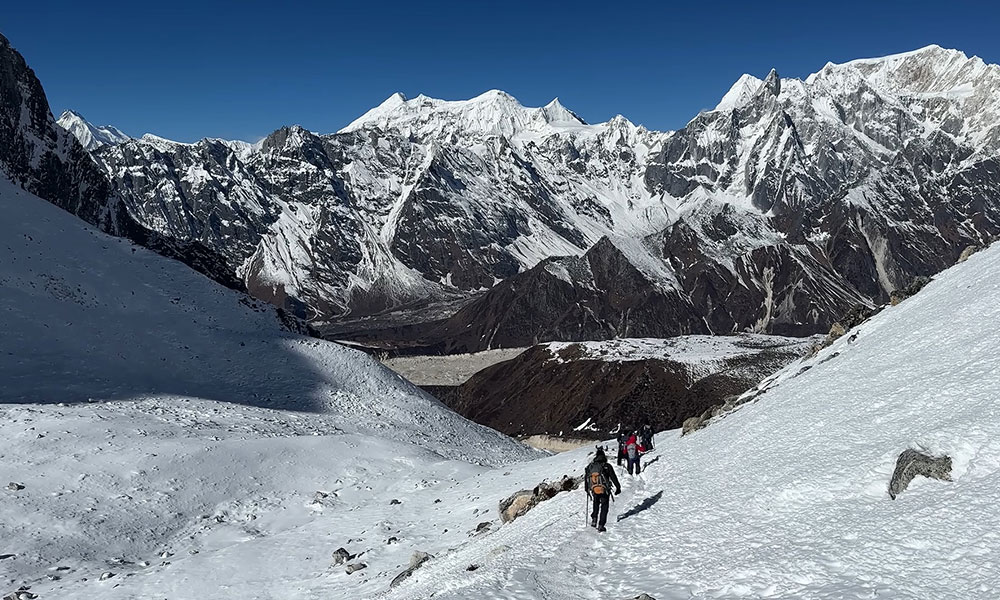
There are several ways to acclimatize in high-altitude locations. Here are some tips to acclimatize yourself during the Manaslu Circuit Trek.
Gradual ascent: Trekkers should not haste while trekking en route to Manaslu Circuit. Gradual ascent makes your body’s adaptation prominent, and there will be less chance of altitude sickness.
Hydration and Nutrition: During the journey, trekkers must drink plenty of water to stay hydrated. It will ultimately help the body to acclimatize properly. Similarly, trekkers are highly recommended to avoid tobacco, caffeine, and alcoholic products during the trek.
Adequate Rest: The Manaslu Circuit Trek is physically challenging, so adequate rest and sleep are crucial. The human body needs sleep of approx. Seven hours each day, so make sure you do not miss this.
Climbing high, sleeping low: While acclimatizing, climbing high and sleeping low is one of the effective methods. In this process, trekkers hike uphill to the high altitude and return to the lower altitude for an overnight stay. This will normalize the body temperature according to the change in altitude.
Pay Attention to Your Body: Safety is the key priority during the Manaslu Circuit Trek. So you must consider what your body feels like during the journey. If you see the symptoms like nausea, dizziness, and fatigue, you must immediately return to the lower altitude camps for safety and seek medical attention.
Preparation With Gear and Equipment
Without proper gear and equipment, the Manaslu Circuit Trek is almost impossible. Hiking gears will keep up with the relaxed journey throughout the time. And they are supposed to make your journey more easy and convenient. From clothes to backpacks and sunscreen, hats, gloves, sleeping bags, and hiking poles, they are all essential to make your journey more comfortable.
Also, having gear and equipment ensures your safety during the hike. For example, a pair of sturdy hiking boots will help you walk easily through the rugged and rocky terrains while sleeping bags will make you safe from the region's cold temperatures. That’s why we must pack essential gear items for the trek. But what should be on my packing list? Here are some items that you must consider:
What should be on my packing list?
- Pair of Comfortable and Sturdy Trekking Boots with ankle support.
- A durable backpack with a capacity of 40-60 liters.
- Layered clothing is essential to adjust to varying temperatures.
- Moisture-wicking base layers.
- Lightweight trekking pants and long-sleeved shirts.
- Fleece or down jackets for insulation.
- Waterproof and windproof outer shell.
- Warm hats, gloves, and scarves.
- Sleeping bag suitable for cold weather conditions.
- Trekking Poles to support your body in sloppy terrains.
- UV-protective sunglasses.
- First Aid Kit, including adhesive bandages, sterile gauze, blister treatment, antiseptic ointment, and pain relievers.
- Reusable Water Bottles and Water Purification.
- Trekking Map and Navigation Tools.
- Sunscreen and Lip Balm to protect your skin and lips from sunburn and dryness.
- Travel-sized toiletries, including biodegradable soap, toothpaste/toothbrushes, and wet wipes.
- Snacks and High-energy Food.
Hiring Guides and Porters
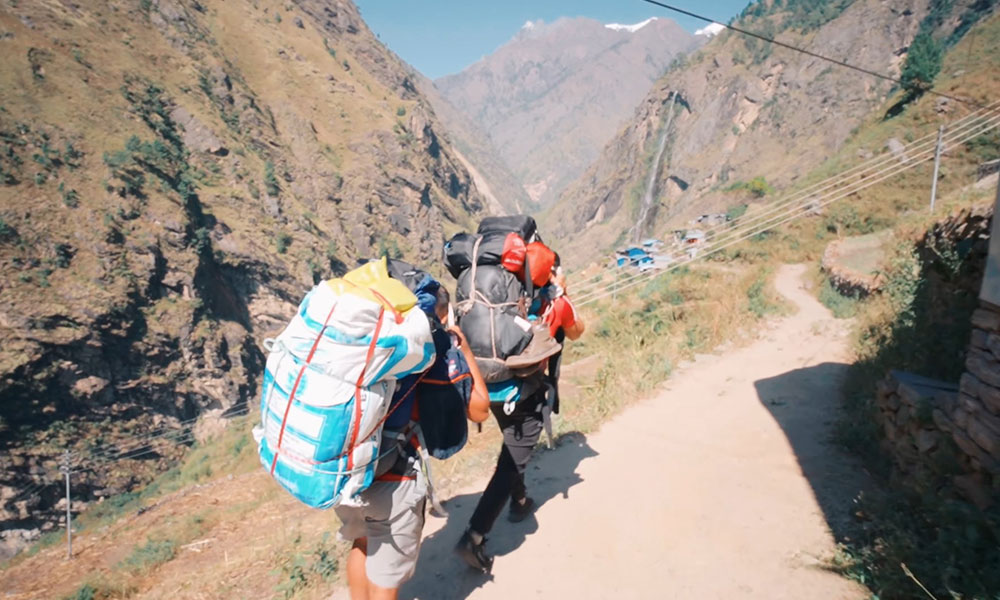
Hiring guides and porters are important aspects of the Manaslu Circuit Trek. And now, the Nepal Tourism Board and Government have applied a law to compulsorily hire a guide for any treks within Nepal. So it is also mandatory to hire a professional and certified guide for the Manaslu Circuit Trek. But it comes with many advantages, from safety to motivation. Here are some reasons why you should hire guides and porters:
Local expertise: Guides and porters are experts in the local environment. And since your trek will be two weeks long, you need professional and certified guides and porters who can lead you through remote and unknown places. These guides and porters have extensive knowledge about location, weather patterns, potential hazards, and cultural aspects. So having them in your crew will be advantageous.
Navigation and route finding: Guides are specially meant to help you navigate. For the trekkers outside of this region, the Manaslu Circuit seems unknown, so you need a helping hand to traverse through. It can be done with the support of guides and porters.
Helpful in Carrying Loads: Usually, porters carry heavy loads and gear during the trek. It will give you enough time for refreshment and make your journey enjoyable.
Cultural Immersion and Language Support: Guides and porters know the local people, their lifestyle, culture, tradition, and history. So they can provide insights into the people and their livelihood and the cultural heritages such as Buddhist Monasteries, temples, and more. Similarly, they can be your translator while communicating with the local people. It will surely make your journey fruitful.
Support and Motivation: Manaslu Circuit Trek is physically and mentally challenging. So while you get exhausted and feel detained in the energy loss, guides and porters can help you motivate and commence your trek ahead. And if emergencies occur during the trek, they will always be your immediate support.
How long is Manaslu Circuit trek?
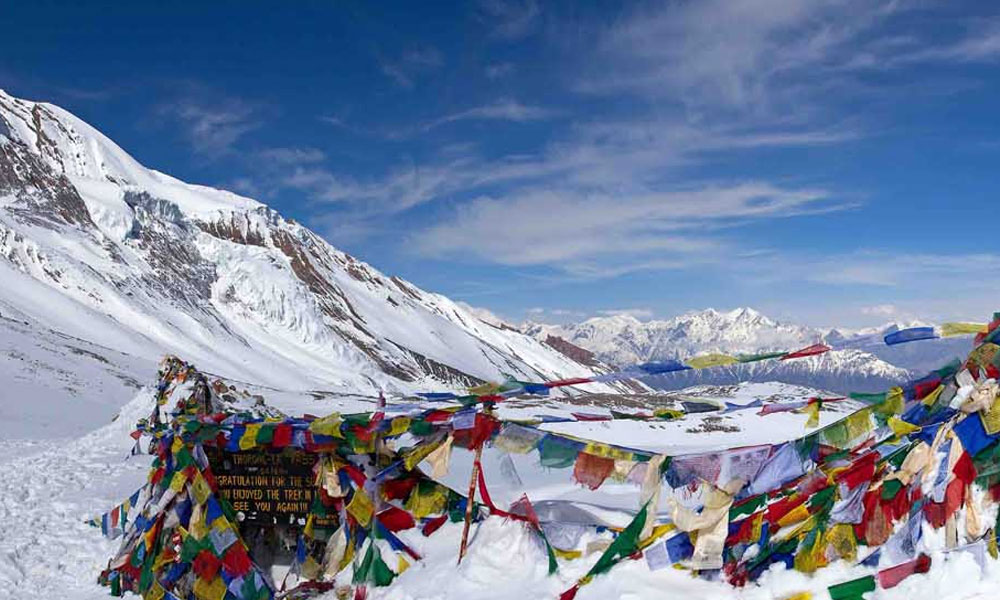
The Manaslu Circuit Trek is usually 14 to 18 days long. We have short and long forms of this package at Eco Holidays Nepal. If you are looking for a budget-friendly trek, you can opt for the short trek, which has around 11 days of itinerary. Similarly, there is an option for customizing your trek which means you can extend your trek.
The first day of the Manaslu Circuit Trek starts with a drive from Kathmandu to Arughat and then a trek to Soti Khola. From Soti Khola, we will commence our journey to Machha Khola on the second day. Remember, the rugged and rocky route makes the journey physically demanding. But having the views of green vegetation, Budhi Gandaki River, and snow-capped peaks like Manaslu, Annapurna, and Dhaulagiri Mountain Range will soothe your trip.
The third day starts with a subtle hike from Machha Khola to Jagat, which takes around 5 to 6 hours. Following the lead of the Budi Gandaki River, we will reach our next destination, Deng, on the fourth day. The trail passes through the Buddhist settlements rich in mani walls, chortens, and prayer flags before reaching Namrung and Lho Villages. From these places, we can view magnificent peaks like Ganesh Himal, Siring, Mt. Himal Chuli, Annapurna, and Dhaulagiri.
We will then continue our journey to Samagaon, Samdo, and Dharmasala before we reach the highest point at Larke Pass (5213 meters above sea level). After that, we will descend through the sandy and rocky trail through Bhimtang, Tilche, and Dharapani, from where we will catch a jeep to return to Kathmandu.
You may also like:
- Manaslu Circuit Trek Permit
- Manaslu Circuit Trek Distance
- Manaslu Base Camp Trek
- How long is Manaslu Trek?
Frequently Asked Questions
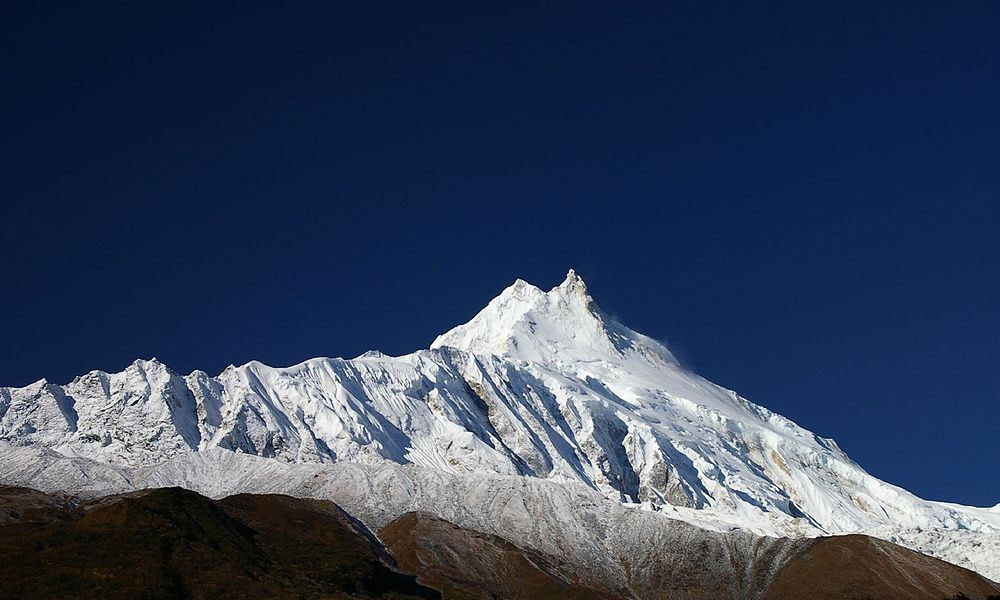
What is the best time to go to the Manaslu Circuit Trek?
The best time to go to the Manaslu Circuit Trek is during Spring [March to May) and Autumn (September to November) seasons. During these times, the weather is usually stable with clear skies and clear views, allowing you to have the picturesque vistas of mountains, streams, forests, traditional villages, and more. Similarly, the temperature is mild, allowing you to have an enjoyable journey throughout the trip.
Are there any requirements for permits for the Manaslu Circuit Trek?
Yes, you must obtain three trekking permits for the Manaslu Circuit Trek. They are Annapurna Conservation Area Project Permit (ACAP), Manaslu Conservation Area Project Permit (MCAP), and Restricted Area Permit (RAP).
How to obtain these permits?
You can obtain these permits by submitting copies of your legal documents, such as a Valid Visa, passport, photographs, and fees.
Where can I buy the permits?
You can get these permits from the Nepal Tourism Board in Kamaladi, Kathmandu.
How much do these permits cost?
In September, the Special Restricted Area Permit for Manaslu (Manaslu RAP) costs USD 100 per person [for the first seven days}. In August, it costs USD 75 per person for the first seven days. You have to pay an additional USD 15 per person and USD 10 per person for each day, respectively, for September and August.
Similarly, Manaslu Conservation Area Project (MCAP Permit) costs USD 30 per person. In addition, Annapurna Conservation Area Project (ACAP Permit) costs USD 30 per person.
Is travel insurance essential?
Travel insurance is essential since it covers some portions of your travel cost if the package gets canceled or postponed.
What type of accommodation facilities are there?
You can find tea houses and lodges during the Manaslu Circuit Trek.
Why should I hire guides and porters for this trek?
First, it is compulsory to hire guides, and second, it is for your safety. They can help with navigation, language support, heavy loads, and many more.

